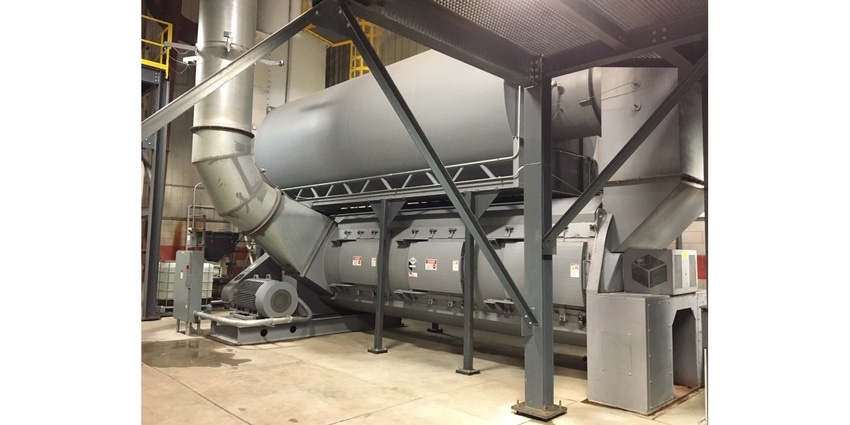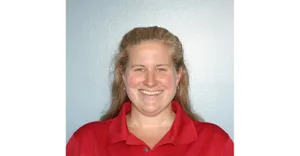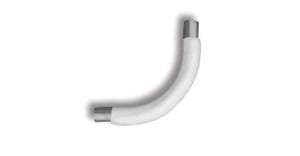Devansoy decided to turn waste into a profitable animal feed product versus the costly fees associated with proper disposal.
December 22, 2020

Devansoy is a successful company in Rockford, IL that processes food-grade soy products out of organic and conventional soybean varieties. Devansoy’s Benesoy ingredients are made using a unique process that results in natural and organic soy ingredients that are whiter, blander, and easier for its customers to use. This proprietary process allows Devansoy’s all-natural and organic liquid soy proteins, soy protein powders, and soy flours to offer consistency and quality. The all-natural Benesoy process leaves all elements intact, providing a product that’s rich in naturally-occurring soy isoflavones, with all the benefits its consumers expect from soy.
As part of the process, a soy waste stream byproduct called okara is generated. Through strategic planning and thoughtful marketing, Devansoy decided to turn this waste into a profitable animal feed product versus the costly fees associated with proper disposal. By drying the okara, a marketable feed commodity is produced that withholds respectable protein content. To dry this product, Devansoy turned to a custom manufacturer of industrial processing equipment, Scott Equipment Co. in New Prague, MN. Scott Equipment has had success with this sort of application in its patented AST drying system.
Devansoy conducted a dryer trial in the Scott Equipment test facility where a full-scale production AST dryer was used to dry the okara. Valuable data and sizing requirements were obtained for Devansoy’s research and development purposes that armed Deb Wycoff, Devansoy owner/CEO, with the information needed to make an informed decision on the best way to move forward regarding this drying process. Devansoy has been pleased with the system to date as it has met and exceeded all expectations. “From an operating stand point, our Scott drying system is quite simple to operate and maintain,” said Corey Kuntzelman, operations manager at Devansoy. “We have processed millions of pounds of material through our dryer.”
The drying system is a pneumatic drying system designed for rugged duty and versatility in many industries. This drying technology utilizes adjustable paddles and air dams to create optimum air to solids heat transfer. Even slurries with dry solids content as low as 5% can be dried efficiently to as high as 99% dry solids in a single pass through the flash dryer.
The agitation provided by Scott’s AST dryer allows hot air to mix with the wet product entering the dryer inlet, reducing the drying time and breaking up lumps. After purchasing a Scott AST dryer system for processing the okara material, Devansoy began producing a finished product that is a golden brown color and with an appealing aroma. To achieve a quality product, a back-mix principle is utilized whereby some of the finished product is returned to a mixing and feed system to reduce the moisture level of the incoming feed stream. The waste okara is dried initially without back-mix to generate what’s called “seed” to start the process. Once a sufficient quantity of seed has been generated from the dried okara, the dried add-back (10% moisture) is mixed with the wet okara (80% moisture), resulting in a mixture that has a moisture level in the vicinity of 25%. A Scott twin-shaft mixer is used to mix the materials together and a live-bottom feeder is used to introduce the feed material into the dryer at a controlled feed rate. Upon exiting the dryer, the dried okara is naturally cooled while being pneumatically conveyed to the add-back system. Excess dried okara is then transferred to finished product storage. The process is able to perpetuate itself and continue to run seamlessly until the supply of wet okara is stopped.
“Devansoy’s investment into the Scott drying system allowed us to take a by-product waste stream from a human food production process and convert to an animal feed product, which also happens to be value added with organic certification,” said Wycoff. “The overall project will continue to generate a positive ROI for years to come at our facility.”

The primary components of a typical continuous flow dryer system consists of a feed system that is controlled by a VFD to feed the correct amount of material at a given rate, burner/dryer, bag house, possibly a cyclone (depending on the material), and a high CFM fan that is located at the end of the system and draws the air through the dryer and bag house. The advantage of using a high-speed fan that draws the air through the system is that it creates a negative pressurized system that minimizes the dust in the work area. Finished product is often cooled using a jacketed blender as it exits the bag house prior to being packaged.
There are many types of materials that require drying and because of their properties can be complicated to remove the moisture. Because of this, it is always recommended to run lab trials in the dryer manufacturer’s test facility to determine the compatibility of the material with the dryer technology. Also, data points are gathered for determining process parameters and for calculating the correct size of the system to meet the throughput requirements.
For more information, contact Scott Equipment Co. at 952-758-2591 or visit www.scottequipment.com.
About the Author(s)
You May Also Like




